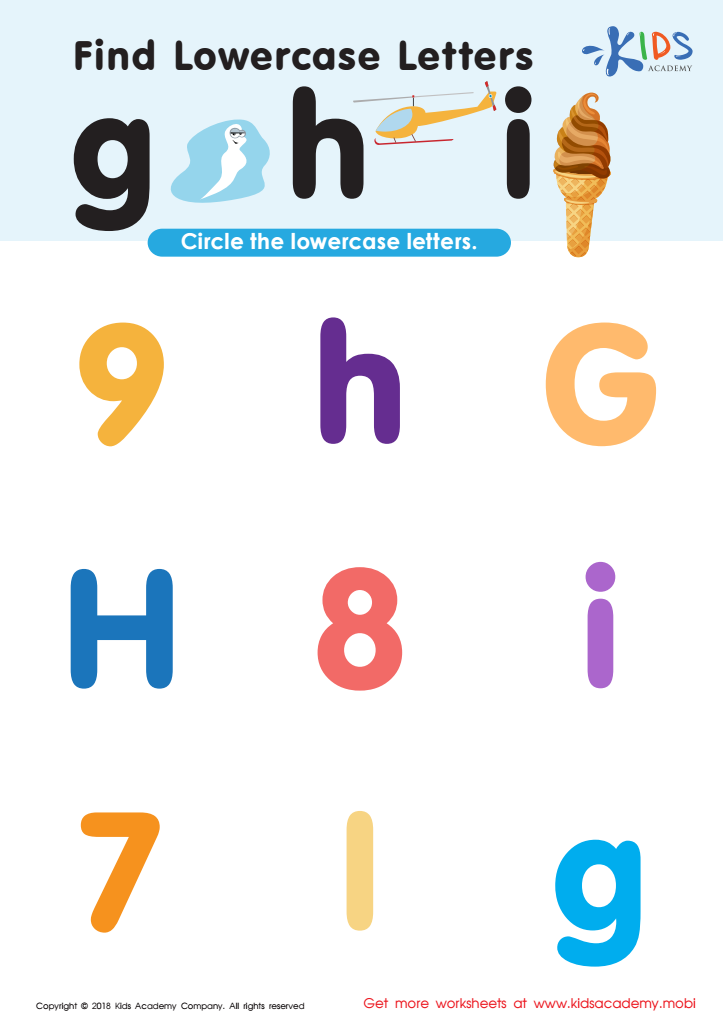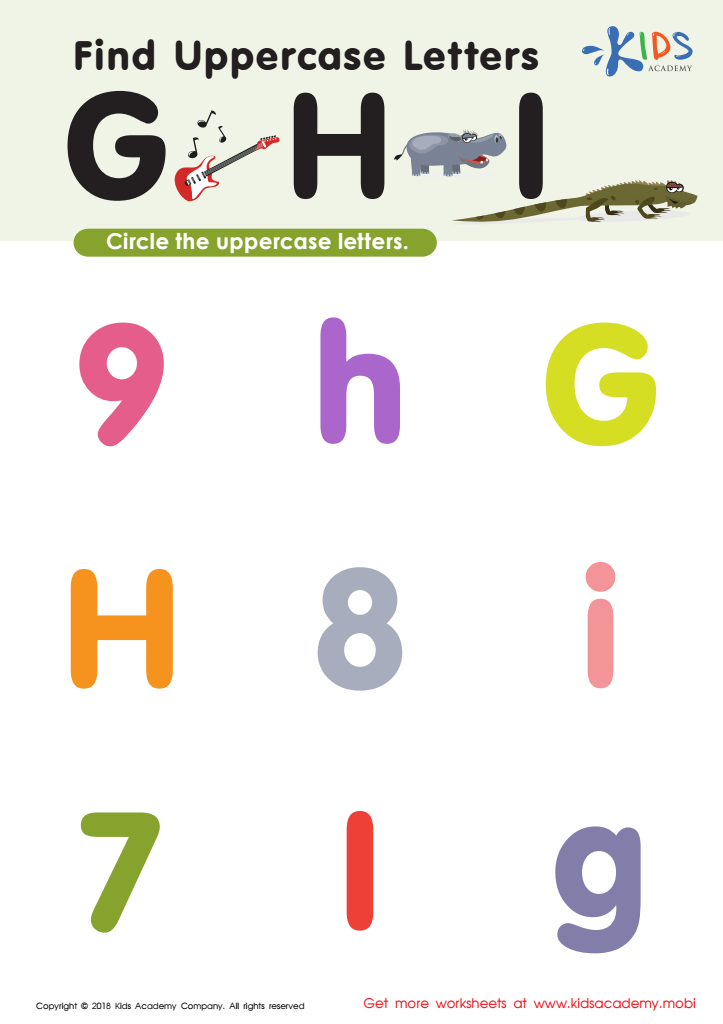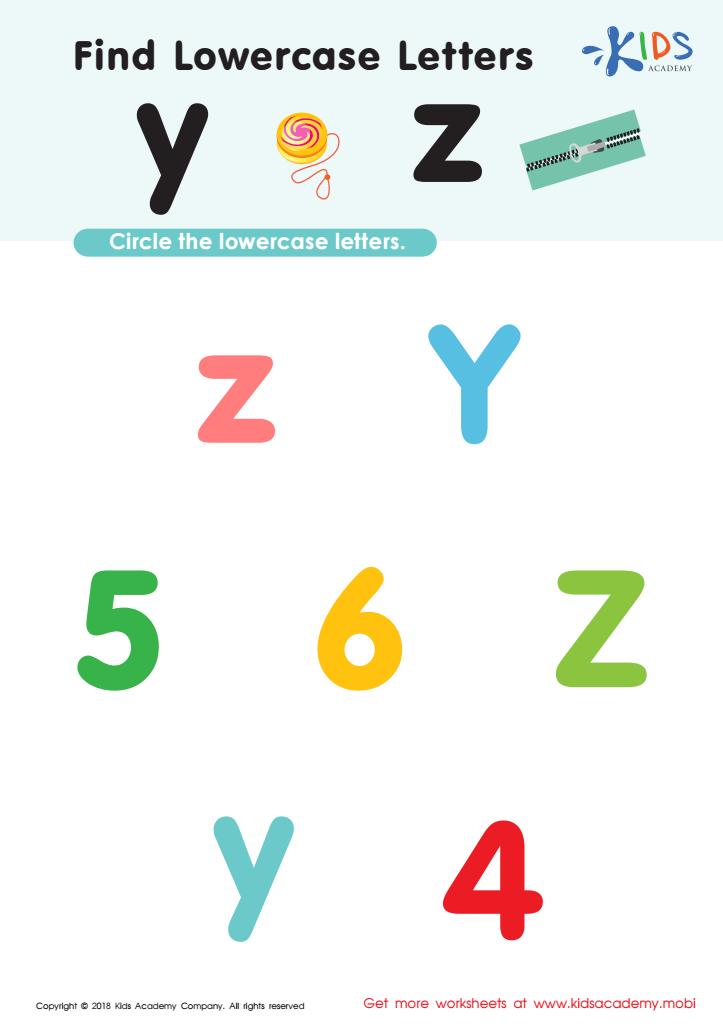Visual discrimination Normal Upper & Lowercase Letters Worksheets for Ages 5-8
4 filtered results
-
From - To
Boost your child's reading and writing skills with our Visual Discrimination Normal Upper & Lowercase Letters Worksheets designed for ages 5-8. These engaging worksheets help young learners differentiate between uppercase and lowercase letters, enhancing their visual perception and recognition abilities. Perfect for homeschooling or classroom activities, these resources encourage early literacy while making learning fun! Each worksheet includes vibrant illustrations and age-appropriate exercises tailored to reinforce letter identification and improve fine motor skills. Empower your child’s journey to becoming a confident reader and writer with our interactive printable worksheets that align with early learning standards. Access them today and watch your child thrive!


Find Lowercase Letters g h i Worksheet


Find Uppercase Letters G, H, and I Worksheet


Find Lowercase Letters y z Worksheet


Find Uppercase Letters V, W, X Worksheet
Visual discrimination of uppercase and lowercase letters is crucial for children ages 5-8 as it significantly impacts their reading and writing skills. At this developmental stage, children are beginning to decode words and understand the alphabetic principle. Mastering visual discrimination helps them easily identify and differentiate letter forms, a skill essential for word recognition.
When children can quickly recognize letters, they can read more fluently, enhancing comprehension and motivation. Success in reading sets a strong foundation for academic achievement across subjects. Additionally, visual discrimination supports writing skills; mixing up uppercase and lowercase letters can lead to confusion in spelling and grammar.
Furthermore, this skill contributes to a child's overall cognitive development. Enhancing their ability to notice differences promotes critical thinking and attention to detail, beneficial in various aspects of learning.
Parents and teachers play a pivotal role in fostering this skill through fun activities and engaging games that encourage practice. As children gain confidence in letter recognition, they are more likely to develop a love for reading and learning, paving the way for lifelong educational success. Ensuring that children master visual discrimination of letters is the first step toward building crucial literacy skills that will serve them throughout their lives.
 Assign to My Students
Assign to My Students












